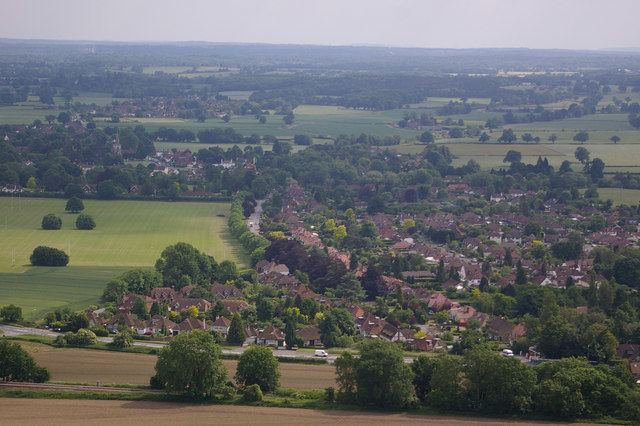Population 2,868 2011 Civil parish Brockham Area 6.9 km² Dialling code 01737 | OS grid reference TQ2049 Sovereign state United Kingdom Local time Saturday 2:18 AM | |
 | ||
Weather 7°C, Wind S at 6 km/h, 99% Humidity | ||
Dji phantom 2 vision brockham village green
Brockham is a village and civil parish in the Mole Valley district of Surrey, England. It is approximately 1.5 miles (2.4 km) east of Dorking and 4 miles (6.4 km) west of Reigate. The village lies south of Box Hill, with the River Mole flowing west through the village. At the 2011 census, it had a population of 2,868.
Contents
- Dji phantom 2 vision brockham village green
- Map of Brockham UK
- Name
- Landmarks
- Village green
- Industry
- Education
- Governance
- Demography and housing
- References
Map of Brockham, UK
Name
Brockham, originally 'Broc-ham' is so called from the Anglo Saxon meaning 'river meadow by the brook' and is first recorded in 1241. It is often mistakenly believed that there is an association with badgers but this is a modern affectation from the 1950s when Cecily M Rutley created Brock the Badger in a children's story [1].
Landmarks
On a spur of land to the north west of the village stands Betchworth Castle, originally built by Richard FitzGilbert on land granted to him by William the Conqueror soon after the Norman invasion in 1066, but later replaced by a medieval house which was probably built in the mid-to-late 14th century. Only a few ruins survive today.
Christ Church, the parish church is relatively recent in origin, having been commissioned in 1847 by Sir Henry Goulburn, who served as both Chancellor of the Exchequer and Home Secretary.
Village green
The village green is a focal point for the village. Once popular for its cricket matches – WG Grace is said to have played there – it is a focal point of a Guy Fawkes Night bonfire every year on the closest Saturday to 5 November. It has been at times, the UK's largest bonfire and firework display, believed to date back to the 1880s. Around 20,000 people gather round the village green, over 4 tonnes of fireworks typically light up the sky and the event is widely regarded by local residents as the highlight of the Mole Valley's calendar. Dorkinian's club house on Pixham Lane, opens for the event, near to the bonfire. About £20,000 per year in the early 2010s was raised on average for local charities.
Industry
Agriculture previously provided most of the employment for villagers, although further work was to be found in the nearby Brockham Hills from the mid-19th century, when they were quarried for chalk and hearthstone – an operation run by the Brockham Brick Company Limited until 1911 and by the Brockham Lime and Hearthstone Company until 1936 when the works closed. From 1945, Beecham Research Laboratories Ltd (now part of Glaxo Smith Kline) operated from Brockham Park at the southern end of the village. In 1959, Brockham Park became famous when Beecham scientists there discovered the penicillin nucleus, 6-APA (6-aminopenicillanic acid); this discovery allowed the synthesis of a number of new semisynthetic penicillins. In 1959, Beecham marketed pheneticillin, followed shortly by meticillin (or methicillin), which is active against the bacterium Staphylococcus aureus ('Golden Staph'). In time resistance developed to these antibiotics; hence the origin of the term MRSA or Methicillin – Resistant Staphylococcus Aureus. The site is now a housing estate.
Education
Brockham Primary School merged with The Acorns Infant School in nearby Betchworth on 2 June 2010 to create a new combined primary school now named The North Downs Primary School. The merger and name change caused a huge local debate as many people wanted the names and uniform colour to remain the same.
Governance
Surrey County Council elected every four years, has one representative, from Buckland for Dorking Rural:
The second party forming the main local opposition in the 2013 election, was the Liberal Democrats gaining 1,527 votes versus the winning candidate's 1,810.
2 councillors sit on Mole Valley borough council, who are:
Demography and housing
The average level of accommodation in the region composed of detached houses was 28%, the average that was apartments was 22.6%.
The proportion of households in the civil parish who owned their home outright compares to the regional average of 35.1%. The proportion who owned their home with a loan compares to the regional average of 32.5%. The remaining % is made up of rented dwellings (plus a negligible % of households living rent-free).
